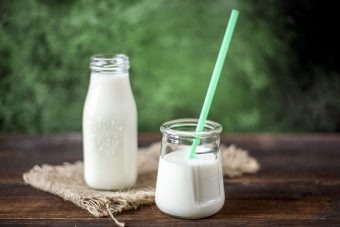One in six pints of milk produced around the world is lost or wasted, according to research conducted at Edinburgh University for the Guardian.

Sixteen percent of dairy products – 116m tonnes – is lost or discarded globally each year, according to Prof Peter Alexander, a member of the newly formed Global Academy of Agriculture and Food Security. He calculated that retailers, distributors and consumers are responsible for half of this waste, throwing away roughly 60m tonnes of dairy a year.
About 55m tonnes are lost before they even reach a store – during production and distribution – due to spoilage and waste at the farm, or while the milk is being distributed and exported abroad.
However, some analysts believe dairy waste figures could be as high as 30% if further inefficiencies such as flooding foreign markets, using milk as animal feed and overconsumption, are taken into account.
“To achieve a more efficient system, and reduce the environmental impacts from our food production, we need to consider ways to reduce all these sources of loss,” said Alexander.
In many developing countries, the percentage of milk lost from farm to store is much higher than in more economically developed countries, due to difficulties in storing and transporting products. For example, 15% of Oman’s milk is lost at the farm level, compared with 0% in Sweden, according to the UN’s Food and Agriculture Organisation (FAO).
In more developed countries, such as the UK, milk and dairy tend to get thrown away at the retailer and consumer level. According to Wrap, the UK government’s waste reduction body, a fifth of all food waste in the UK is dairy.
Despite this, dairy production has been growing rapidly around the world over the past four years, rising by 6% between 2014 and 2018, according to the US Department of Agriculture (USDA). The biggest production increases were seen in India, Canada, the Netherlands and Ireland.
Europe significantly increased its production of milk in 2015 when the European milk quota was lifted, which had limited the amount farmers could produce.
Read more: Guardian

